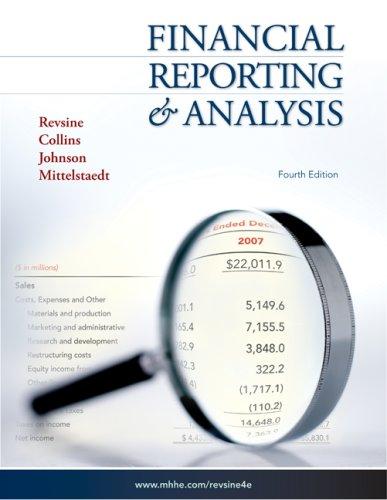In October 2003, analysts were expecting sales at Krispy Kreme Doughnuts, Inc. to be $657 million in
Question:
In October 2003, analysts were expecting sales at Krispy Kreme Doughnuts, Inc. to be $657 million in 2003 and $819 million in 2004. Net income was expected to be $50.7 million in 2003 and $65.9 million in 2004. The company's financial statements through 2002 are contained in the spreadsheet template available on the textbook Web site.
Required:
1. Using the steps outlined in Appendix B to this chapter and the spreadsheet template, prepare 2003 and 2004 forecasted financial statements (income statements, balance sheets, and cash flow statements) for Krispy Kreme. Your forecasts should incorporate the following assumptions:
• Sales for 2003 and 2004 will equal $657 million and $819 million, respectively.
• Nonoperating expenses and income will be zero.
• The company’s income tax rate will be 35%.
• All other income statement items are expected to equal their 2002 levels as a percentage of sales. Depreciation expense was $12.3 million in 2002 ($10.3 in cost of goods sold and $2.0 in selling, general, and administration [SG&A]) and $8.0 million in 2001 ($6.0 in cost of goods sold and $2.0 in SG&A).
• All balance sheet items except Common stockholders’ equity are expected to equal their 2002 levels as a percentage of sales. Accumulated depreciation was $43.9 million and $50.2 million in 2001 and 2002, respectively. Combine Long-term investments, Intangibles, and Other assets into a single balance sheet item (Other assets).
• Debt is expected to be 15% of assets, and the current portion of long-term debt will be 10%
of total debt each year. Interest expense will be 6% of debt at the beginning of each year.
• The company will issue or buy back stock during 2003 and 2004 to meet its cash flow needs or to distribute excess cash. Dividends and Other comprehensive income will be zero.
2. How do your net income forecasts from requirement 1 compare with those of the analysts ($50.7 million and $65.9 million)? What does this tell you about your forecasting assumptions compared to those used by the analysts?
3. Why is it important to assume the company will issue or buy back stock when constructing financial statement forecasts?
4. How do your sales, net income, accounts receiveable, total assets, and operating cash flow forecasts for 2003 and 2004 compare to the amounts actually reported by the company in those two years? What factors are likely to explain sizable differences between the actual figures and your forecasts?
Step by Step Answer:






